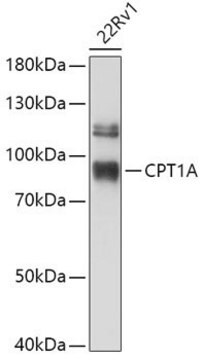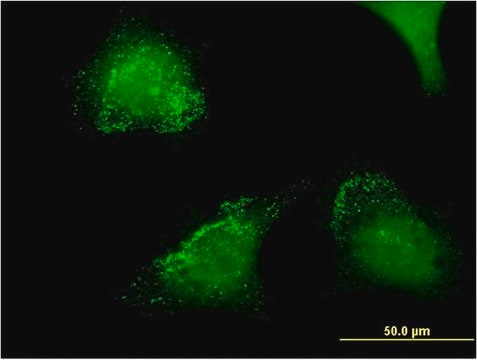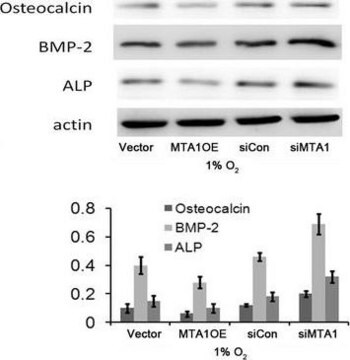MABF96
Anti-TRAcP Antibody, clone 9C5
clone 9C5, from mouse
Synonim(y):
Tartrate-resistant acid phosphatase type 5, TR-AP, Tartrate-resistant acid ATPase, TrATPase, Type 5 acid phosphatase
Wybierz wielkość
1470,00 zł
Przewidywany termin wysyłki05 maja 2025Szczegóły
Wybierz wielkość
About This Item
1470,00 zł
Przewidywany termin wysyłki05 maja 2025Szczegóły
Polecane produkty
pochodzenie biologiczne
mouse
Poziom jakości
forma przeciwciała
purified antibody
rodzaj przeciwciała
primary antibodies
klon
9C5, monoclonal
reaktywność gatunkowa
human
metody
ELISA: suitable
dot blot: suitable
immunocytochemistry: suitable
immunohistochemistry: suitable
immunoprecipitation (IP): suitable
western blot: suitable
izotyp
IgG2bκ
numer dostępu NCBI
numer dostępu UniProt
Warunki transportu
wet ice
docelowa modyfikacja potranslacyjna
unmodified
informacje o genach
human ... ACP5(54)
Opis ogólny
Immunogen
Zastosowanie
Inflammation & Immunology
Inflammation & Autoimmune Mechanisms
Immunoprecipitation Analysis: A representative lot was used by an independent laboratory in IP. (Janckila, A.J., et al. (1995). Blood. 85:2839-2844.)
Dot Blot Analysis: A representative lot was used by an independent laboratory in DB. (Janckila, A.J., et al. (1995). Blood. 85:2839-2844.)
ELISA Analysis: A representative lot was used by an independent laboratory in ELISA. (Janckila, A.J., et al. (1995). Blood. 85:2839-2844.)
Immunocytochemistry Analysis: A representative lot was used by an independent laboratory in IC. (Janckila, A.J., et al. (1996). The Journal of Histochemistry and Cytochemistry. 44(3):233-244.)
Jakość
Immunohistochemistry Analysis: 1:500 dilution of this antibody detected TRAcP in large malignant B-cells in hairy cell leukemia tissue.
Opis wartości docelowych
Postać fizyczna
Przechowywanie i stabilność
Komentarz do analizy
Large malignant B-cells in hairy cell leukemia tissue
Inne uwagi
Oświadczenie o zrzeczeniu się odpowiedzialności
Nie możesz znaleźć właściwego produktu?
Wypróbuj nasz Narzędzie selektora produktów.
Kod klasy składowania
12 - Non Combustible Liquids
Klasa zagrożenia wodnego (WGK)
WGK 1
Temperatura zapłonu (°F)
Not applicable
Temperatura zapłonu (°C)
Not applicable
Certyfikaty analizy (CoA)
Poszukaj Certyfikaty analizy (CoA), wpisując numer partii/serii produktów. Numery serii i partii można znaleźć na etykiecie produktu po słowach „seria” lub „partia”.
Masz już ten produkt?
Dokumenty związane z niedawno zakupionymi produktami zostały zamieszczone w Bibliotece dokumentów.
Active Filters
Nasz zespół naukowców ma doświadczenie we wszystkich obszarach badań, w tym w naukach przyrodniczych, materiałoznawstwie, syntezie chemicznej, chromatografii, analityce i wielu innych dziedzinach.
Skontaktuj się z zespołem ds. pomocy technicznej








